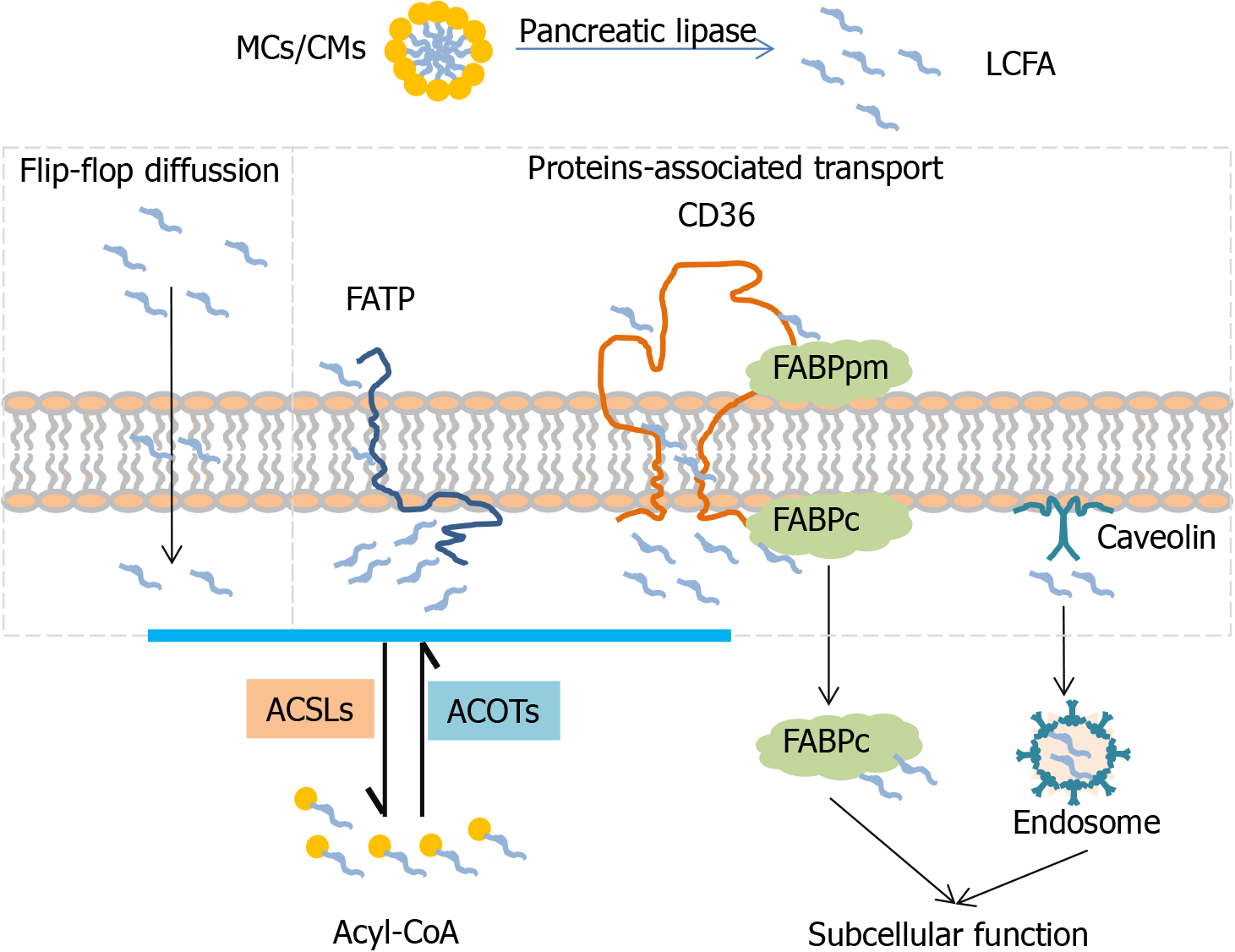Copyright
©The Author(s) 2021.
World J Hepatol. Nov 27, 2021; 13(11): 1512-1533
Published online Nov 27, 2021. doi: 10.4254/wjh.v13.i11.1512
Published online Nov 27, 2021. doi: 10.4254/wjh.v13.i11.1512
Figure 1 Mechanism of long-chain fatty acid transport across the lipid raft.
LCFAs are taken up into cell in two different ways. One is passive transport by a flip-flop with rate limiting. The other is active transport, which is mediated with transport-associated proteins (FATPs, CD36, FABPs and Caveolin). FATPs with tissue-specific distribution integrating both transport and activation functions are responsible for LCFAs uptake. Free FAs trapped by the FABPpm present to CD36 and are transported into cells. Consequently released free FAs bind with FABPc and CAV channel into different organelles and are activated by different subcellular expression of ACSLs into acyl-CoA. In addition, acyl-CoA can be deactivated to free FA and CoA which is mediated by ACOTs. Liver-specific proteins: FATP5, FABP-L, ACSL1; Intestine-specific proteins: FATP4, FABP-I, ACSL5; ACSL: Acyl-CoA synthetase, ACOT: Acyl-CoA thioesterase; MCs: Micelles, CMs: Chylomicrons
- Citation: Ma Y, Nenkov M, Chen Y, Press AT, Kaemmerer E, Gassler N. Fatty acid metabolism and acyl-CoA synthetases in the liver-gut axis. World J Hepatol 2021; 13(11): 1512-1533
- URL: https://www.wjgnet.com/1948-5182/full/v13/i11/1512.htm
- DOI: https://dx.doi.org/10.4254/wjh.v13.i11.1512









